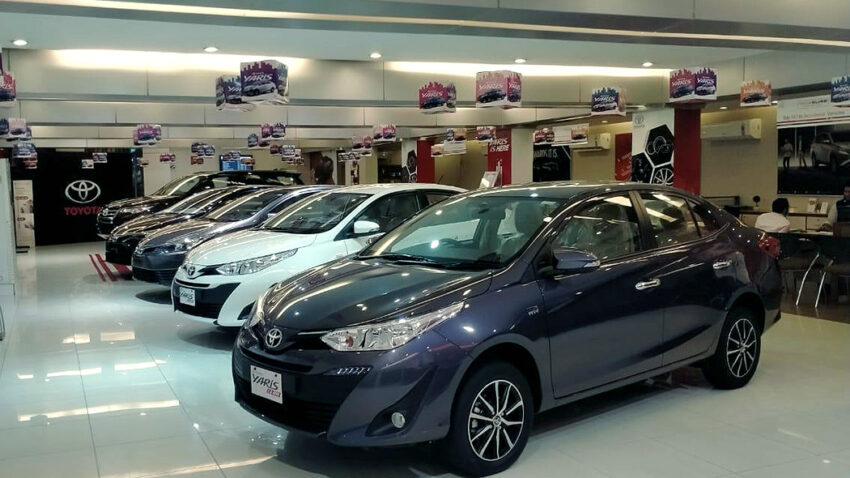After facing a 43% decline in sales, auto industry sector stakeholders believe that the next 6 months appear more challenging than the previous 7 months of the current fiscal year.
The industry continues to face parts shortages due to the State Bank’s (SBP) restrictions on opening new letters of credit (LCs), resulting in plant closures and long delivery times for vehicles. However, industry players maintained their past practice of jacking up prices amid plant shutdowns, uncertain economic conditions, and dwindling sales. Some assemblers even gave multiple price shocks in less than a month to offset overhead expenditures.
Related: Depressing Times for Auto Sector Continues as Sales Plunge 43%
The eroding rupee value against the dollar has made parts import costlier, whose impact is being passed on to the consumers, but no one cares about giving any price relief to the buyers in view of the rupee’s recovery against the dollar. One dollar was equal to Rs 264.38 on February 16 as compared to Rs 276.58 on February 3 in the interbank market.

However, according to the report published in Dawn, plants shut down by auto assemblers had resulted in the loss of 250,000-300,000 direct and indirect jobs in the auto vending industry at a time of soaring food inflation and utility bills. Pak Suzuki, the largest auto assembler in the country kept its plant closed for nearly 50 days in the last 7 months.
Related: Will IMC Launch Local Assembled Toyota Corolla Cross in 2023?
Indus Motor Company (IMC) the assemblers of Toyota cars has kept its plant closed for a total of 53 days, from August 2022 to February 2023 with sales plunging by 51% in 7M-FY23 to 21,877 units. But CEO of IMC, Ali Asghar Jamali said despite a massive drop in production and frequent plant shutdowns, “our company has not offloaded any of the employees, not even drivers and low-salary people.” Commenting on the outlook of the industry, he said:
“It is hard to predict future sales scenario as things are not visible regarding the opening of fresh LCs for parts and accessories. We do not know what is going on. I think overall auto sales in FY23 will fall by at least 50%, keeping in view the current situation.”
However, on the possibility of a price cut as the rupee value gained against the dollar from February 3, Jamali said “we do not know the situation ahead.”
Related: 5 Years Old But Double the Price in Used Car Market
A consumer auto finance banker in a private bank said, “we have witnessed a decline of around 50% in terms of consumer footfall in the bank for auto financing from July 2022 to February 2023.” Due to late deliveries of new vehicles, customers are also moving towards used cars and buying them in cash. He went on to reveal, “we have not met our financing targets from July 2022 till date.”

According to the auto part maker, exporter, and director of Mehran Commercial, Mashood Ali Khan, the year 2023 will be the most difficult year for the auto industry. He says the main reason is the trust deficit between all federal ministries and provinces and the business community. Mashood Ali Khan suggests:
“All assemblers must collectively coordinate a shutdown schedule that will save the vendor. Every assembler is operating a plant and announcing a shutdown on different days of the month. This is adversely affecting the vendors who are forced to continue opening throughout the month with no work. This is very hard for the survival of the vendors. The best option is to have non-production days in all assembling units on specific dates to help vendors close on the same days to save operational costs.”
Mr. Khan said assemblers also need to assist small and medium enterprise vendors with financial instruments, adding that Toyota is currently the only vehicle assembler that has given an interest-free loan for 9 months to its vendors.

A Lahore-based auto assembler said the government is focusing more on revenue generation of Rs 170 billion rather than production closure and the massive drop in sales due to parts shortage and issues of LCs. No one cares about the alarming rise in unemployment. Low to large-scale units depend on imported raw materials which take three to four months to arrive. He questioned:
“From where the government will fetch huge revenue amid dwindling auto sales and plant closure. Raw material inventories are fast running out. How will the government survive without any revenue earning?”
Full Story: Dawn

A computer animation professional with over 23 years of industry experience having served in leading organizations, TV channels & production facilities in Pakistan. An avid car enthusiast and petrolhead with an affection to deliver quality content to help shape opinions. Formerly written for PakWheels as well as major publications including Dawn. Founder of CarSpiritPK.com




